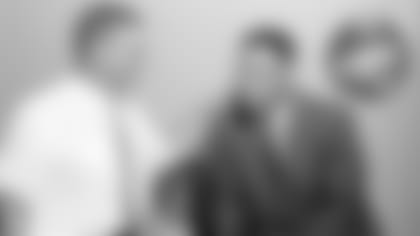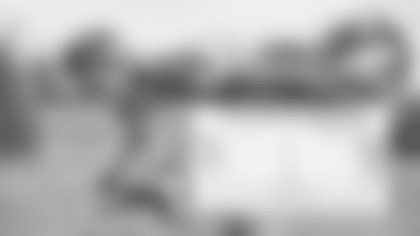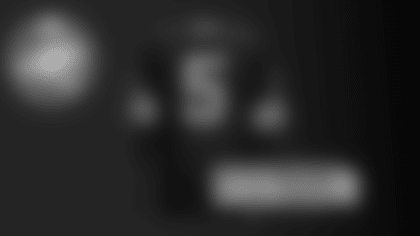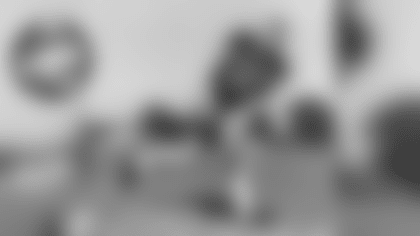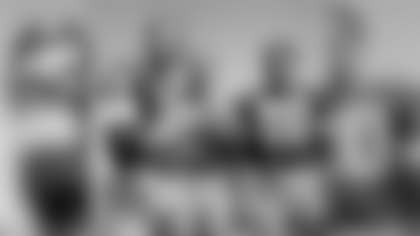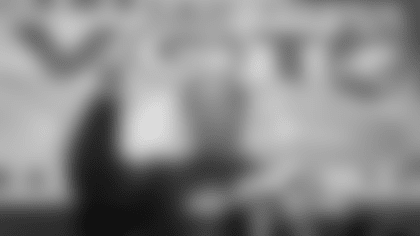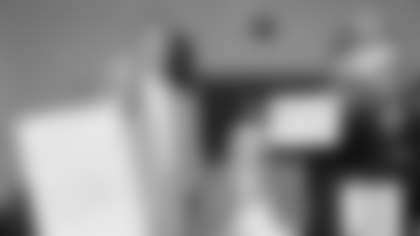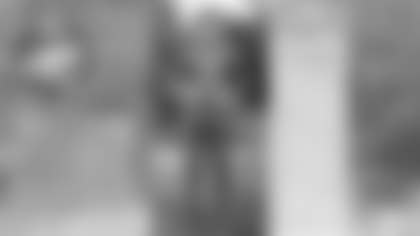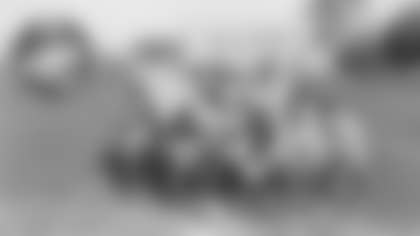Dan & Jean from Shawano, WI
Please have Emlen Tunnell recognized and added to the Lambeau Field "Ring of Honor." I am asking that based on his contributions to the Packers and the NFL. While his contributions on the field are measurable, an even more significant contribution that he may have made was increasing the accessibility of playing in the NFL and for Green Bay for Black American athletes. Without the many Black athletes on Vince Lombardi's teams, Green Bay would not likely have won as many championships. And the argument that his career with the Packers was not long enough does not hold water, either. Other existing "Ring of Honor" members also didn't play all or even most of their careers in Green Bay.
First, I appreciate your passion and also your knowledge of Tunnell's impact on the Packers. It went far beyond his play on the field. Of the five Pro Football Hall of Fame inductees who played for the Packers but weren't designated as primary contributors by the people in Canton, Tunnell would be the only one in my opinion where you could make a case that his name belongs on the façade.
Tunnell played three years for the Packers from 1959-61 and was a starting safety for the first two. When Lombardi acquired him, Tunnell was entering his 12th season and was the NFL's all-time interception leader. As for his age, he was listed at 36 in his final season in Green Bay, but Lombardi's refrain whenever asked about it was: "Only the Lord and Emlen know how old he really is."
Over the past 30 years or so, I interviewed more than 20 of the 36 players from the 1959 Packers, and many of them volunteered that Tunnell was their team leader and Lombardi's sidekick in teaching them how to win. That first year, Tunnell also made the Pro Bowl.
"Em could get a lot closer to the players than we could," Norb Hecker, Lombardi's secondary coach, said when Tunnell announced his retirement in March 1962. "I can't name a player in this business who has been so helpful to rookies, even though it may have cost him his job." Among the players that Tunnell mentored was free agent safety Willie Wood, who replaced him as a starter in 1961.
Nevertheless, even that season, Tunnell saw playing time in key situations. "He still was a vicious tackler, though," Hecker said. "When the opposition got inside our 15, we put him in and he responded with the fury of a linebacker."
I wrote recently about how the Pro Football Hall of Fame designates the primary contributors – it's the second answer under this link – and those are the players the Packers, in turn, recognize on what you referred to as the "Ring of Honor." Frankly, I don't quarrel with any of the hall's designations, although I doubt if anyone in Canton was aware of Tunnell's overall contribution to the Packers when he was inducted in 1967 as a primary contributor with the New York Giants.
As for other Packers who didn't spend the majority of their careers in Green Bay but are recognized on the façade, Reggie White and Charles Woodson played at least double the years that Tunnell did in Green Bay. Tunnell played three of his 14 seasons with the Packers, whereas White played six of 15 and Woodson, seven of 18. As long as Canton doesn't designate Julius Peppers, who played three of 17 in Green Bay, as a primary contributor to the Packers, I see no reason to change anything.
That said, I strongly believe the Emlen Tunnell story is one of the most compelling in Packers history, and one we should forever keep alive in our Packers Hall of Fame and on our website.
Peter from Portland, OR
I heard the Packers once played an exhibition game in an iconic stadium in Portland. It's currently named Providence Park and Pele played his last professional soccer match there. My understanding is that in their first decade or two, the Packers would tour and play exhibition games in the offseason. Do you have any insight?
The Packers beat the Philadelphia Eagles, 45-28, on Aug. 29, 1959, before a crowd of 25,456 at what was then named Multnomah Stadium. That was the third of six preseason games in Lombardi's first season as Packers coach. At the time, most of the Packers' exhibition or preseason games – and it may have been true of most NFL teams – were played at neutral sites.
Often, the Packers drew bigger crowds in cities without pro football than they did at home. For example, the Packers played the Eagles in Milwaukee in 1956 and '57, and in Green Bay in '58. The crowds for those three games ranged from 12,138 in '56 to 17,857 in '58 in what is now named Lambeau Field. That said, they also played the Eagles in 1954 at Hershey, Pa., and in 1955 at Charleston, W. Va., where the crowds totaled 6,134 and 12,500, respectively.
I assume the thinking was that the game might draw well in Portland because Eagles quarterback Norm Van Brocklin had been a star at the University of Oregon and one of the Packers' quarterbacks was second-year man Joe Francis, the single-wing tailback who had led Oregon State to the 1957 Rose Bowl. Back then, veteran starters played extensively even in exhibition games. Van Brocklin, for example, threw 40 passes that night for 378 yards with three interceptions. Meanwhile, Francis started at quarterback for the Packers and built a 38-14 lead, completing 6-of-8 passes for 167 yards. Bart Starr replaced him in the third quarter and was 2-of-7 for 18 yards over the remainder of the game.
Actually, the Packers arrived in Portland on Monday before the game, after playing in San Francisco the day before, and spent the week practicing at the University of Portland, a private Catholic university.
Interestingly, Wikipedia makes no mention of the Packers playing there in its lengthy history of Providence Park, and I didn't find any mention in some other stories about the stadium's history. Granted, an NFL exhibition game wouldn't necessarily be worth noting. It also wasn't the only NFL preseason game played there. But the Packers-Eagles game took place during a pivotal time in our team's history. The Packers had beaten the 49ers, 24-17, six days earlier, and their victory over the Eagles would be their second in their first three exhibition games.
What had been a ragtag, 1-10-1 outfit the year before was suddenly bubbling with optimism. In little more than a month, Lombardi was making believers out of his players and staff.
In the days leading up to the game, business manager Jack Vainisi told Don Fair of the Capital Journal in Salem, Ore., "Vince has done wonders for this club. He's instilled a real fighting spirit, and how he's built up the confidence of the players who were battered last year. Vince is a long way from an ideal personnel situation. Despite that, the progress has been amazing."
Even Lombardi seemed upbeat. He told Fair that leaving New York for a small town had been "quite a change," and that he was still adapting to being in charge of everything, not just an offense. He also told Fair much of the team's hopes hinged on Paul Hornung. "If he can get the hang of the option pass as Frank Gifford did it for the Giants, we'll certainly be dangerous," said Lombardi.
But all in all, he didn't back off from his initial pronouncement at his introductory press conference seven months earlier when he said that he expected to produce a winner. "A writer once asked me if I wasn't being pretty confident in building a home in Green Bay," Lombardi told Fair. "I replied, 'No, only the bank was.'"
One final note. Yes, the Packers did do some barnstorming in the 1920s and '30s, including games in Honolulu, San Francisco and Los Angeles in the winter of 1932-33; and a game in Denver on New Year's Day 1937 followed by one in San Francisco and two in Los Angeles.
Dave from Sister Bay, WI
I was a student at Carroll College from 1957 to 1961. During that time, if I remember right, Liz Blackbourn coached the Pack, was fired, and then took a job as the Carroll Pioneers football coach for a year. Am I right? Have you ever written about Liz Blackbourn?
Yes. Blackbourn coached and served as athletic director at Carroll in 1958, the season after he was fired by the Packers. He was hired in early July to replace Mickey McCormick, who had undergone brain surgery the previous week and would die in little more than a month. Blackbourn compiled a 6-2 record that season and was rehired as football coach at Marquette University in January 1959. He had been the coach at Marquette when the Packers hired him in 1954.
I've written about Blackbourn at our website, but I wrote in much more detail about his years as Packers coach and what contributed to his downfall in our book, “The Greatest Story in Sports,” the history of the Packers over their first 100 seasons*. Blackbourn had deep ties to Wisconsin and was a fascinating figure to research and write about.*
Clayton from Tucson, AZ
I've been trying without success to find out the names of the two teams that played an exhibition game at the University of Arizona stadium in Tucson. It was my first exposure to NFL football and it occurred back in the 1960s, I believe. I attended with my dad and oldest brother, both of whom are deceased. Having been a Packer fan since the early '60s, I'm hoping the Packers were one of the teams.
I can't offer you a definitive answer. But I can offer two clues. Sounds like a special day in your life.
On Sept. 15, 1954, the 49ers beat the Pittsburgh Steelers, 37-14, in what was referred to by the Arizona Daily Star as the first pro football game played in Tucson. The university's stadium was the site, and the entire 49ers' starting backfield was eventually inducted into the Pro Football Hall of Fame: quarterback Y.A. Tittle, halfbacks John Henry Johnson and Hugh McElhenny, and fullback Joe Perry. Tittle threw for three touchdowns and was the star of the game. The Steelers' quarterback was Jim Finks, who is in the Pro Football Hall of Fame as an administrator. He was 13-of-19 for 163 yards.
On Aug. 30, 1980, more than a quarter-century later, the 49ers played the Kansas City Chiefs at Arizona Stadium. Apparently in the dark about the 1954 game, the Tucson Citizen called it the first NFL game ever played in the city. Based on what I was able to uncover, I believe those were the first two appearances by NFL teams in Tucson. I also suspect that the 1980 game wasn't the one you were asking about, and the 1954 game might have been a little too early for you to have been there.
In 1967, former longtime Packers president Lee Joannes, then a part-time Tucson resident, spoke at the Tucson Press Club about his efforts to bring the Packers there for a preseason game, but nothing ever came of it.
Here's another possibility. For five years, from 1958-62, there was an all-star game played in Tucson that as a young boy you might have remembered as a professional or even NFL game. A number of future NFL players, including some future stars, played in those games. Thus, the experience would have been somewhat similar. Perhaps, too, you might have heard your dad and brother reminisce about some of the future Packers – or other NFL players – that they recalled seeing.
Here's a brief history.
On Jan. 4, 1958, the Tucson Cowboys, champions of the new Western Professional Football League, played a College All-Star team that included future New York Giant standout Dick Lynch of Notre Dame and some Big Ten and Big Eight players in what was called the Optimist Bowl. What's more, a future Packers head coach even served as co-coach of the All-Stars. Dan Devine was his name.
A year later, it became the Optimist All-America Bowl, a postseason all-star game of college seniors pitting players from big schools against small schools. Future Packers standout Boyd Dowler of Colorado started for the big schools, while four Packers draft picks, none of whom made the team, started for the small schools: tackle Gary Raid of Willamette, halfback George Dixon of Bridgeport, quarterback Bob Webb of St. Ambrose and tackle Dick Emerich of West Chester.
Arkansas Tech's Eddie Meador, a future Pro Bowl safety for the Los Angeles Rams, was a two-way starter at halfback for the small schools, while Bronko Nagurski Jr. of Notre Dame was a starting tackle for the big schools. However, what turned out to be the biggest name in the game was a 260-pound starting defensive tackle from Cal Poly named John Madden.
In 1960, future Packer Carroll Dale was a starting offensive end for the big schools. The fourth game was played in late December 1961, and the name was changed to simply All America Bowl. The final game was played in 1962 and drew a disappointing 9,000 fans. The biggest name in the game was future Kansas City Chief linebacker and Pro Football Hall of Famer Bobby Bell. Other future pros included Willie Richardson of Jackson State and Homer Jones of Texas Southern.
Either way, whether it was the 1954 NFL game or the All America Bowl, you saw some big-name players worth remembering.



